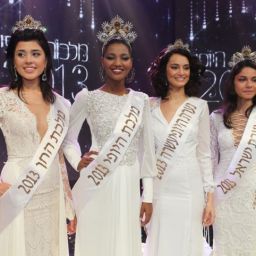Imagine a movie cast set in an exotic location where an adventurous team of bad guys with hearts of gold is assembled. In most movies, this team would be filled with big name stars, mostly white and male. Over the course of The Fast and the Furious movies, the last team roster included only one white guy. One. White. Guy. (And it is possible that he is only there for consistency’s sake.)
The rest of the crew includes two American black guys, two American Latinas, a Korean American, a white American woman, an Israeli woman, Samoan Thor, plus whatever ethnicity Vin Diesel is playing in this movie series.
This also may very well be the first film series I have seen with three Latinas as ongoing characters from movie to movie. Reiterating — there are as many starring roles for Latinas in this movie than white guys (two for both).
I get that there will be fan service in these movies — and there is. But as someone who likes action movies without overwhelming misogyny (blergh, Crank), I appreciate that with the exception of Tokyo Drift, all of the movies have women who are also part of the main crew — or are law enforcement quasi-crew. This la
Even more controversially, this last movie is based around the idea that the crew is family. A multi-ethnic family that will always back each other up, no matter what. Action movies with dudely pairs tend to push the boundary from homosocial to ho-yay and beyond. Fast/Furious has definitely walked the line in previous movies, with interesting use of the male gaze, but this latest movie also includes a long, caring hug between two men — a true hug of comfort and support (not a “dude hug”).
At a time where most movie franchises are based on animation, comic books, books, are James Bond, or are remakes, the success of this series based around bad guys in cool cars played by mostly actors of color is important. A big reason for the overall feel of the movies lies with the director of 3 through 6, Justin Lin, who brought his character, Han, from his first film, Better Luck Tomorrow, into the series. Lin talks about his experience becoming the director of the series in the excellent documentary Hollywood Chinese.




